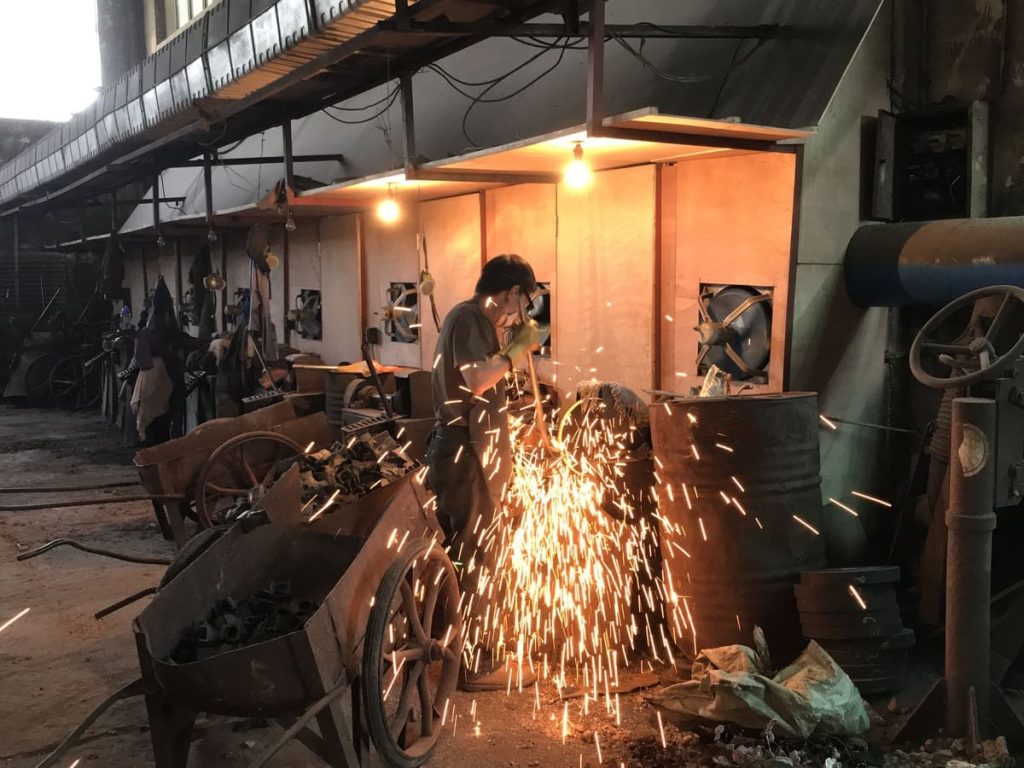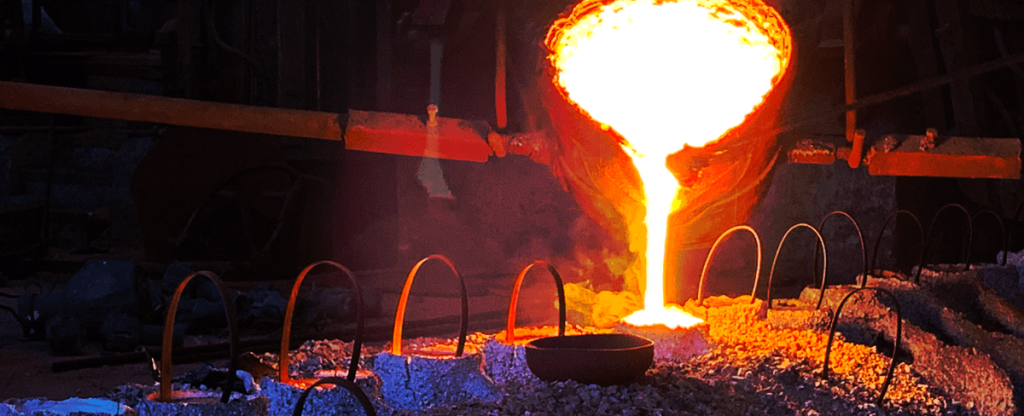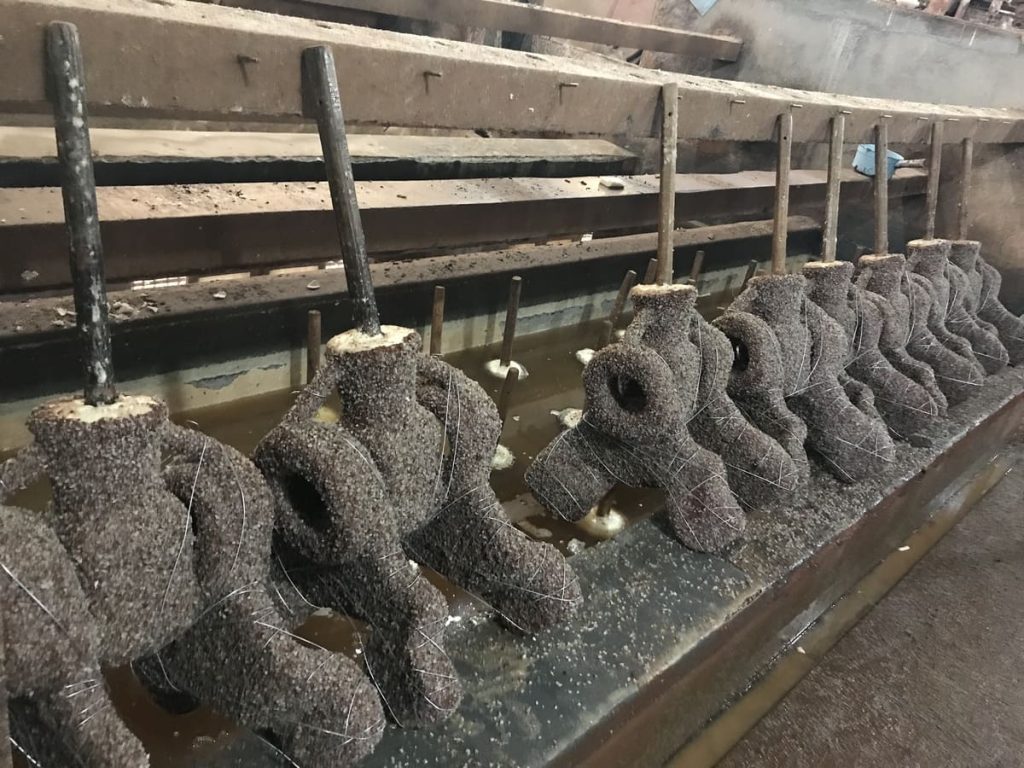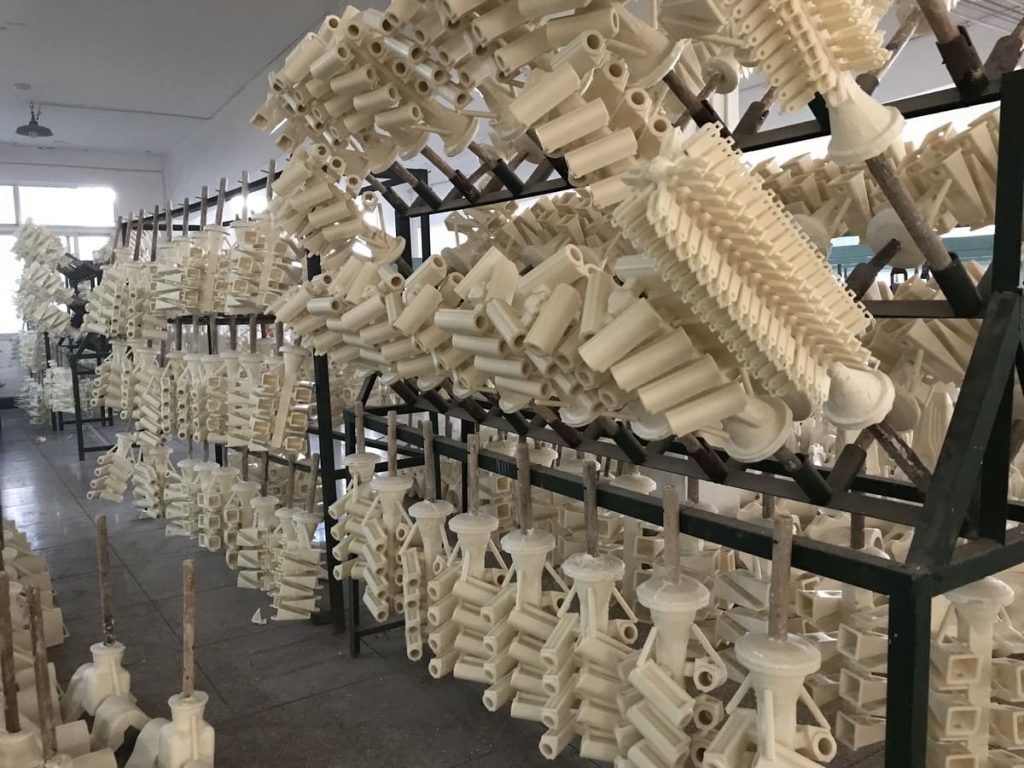



Detailed Lost Wax Casting Process
Design and Prototype: The first step is a detailed design phase, during which computer-aided design (CAD) software is utilised to generate a virtual model of the completed component. Printing in three dimensions (often known as 3D printing) is a technique that can be used to make prototypes.
Preparation of the Mold: The virtual model is used to guide the design and construction of the mould. Both the material for the mould and the creation of the mould must be carefully selected in order to suit the intricacy of the component as well as the qualities of the wax.
Wax Injection: In this process, molten wax is injected into the mould while it is under pressure. This ensures that the wax fills the mold cavity and catches all of the minute details of the design.
Assembly of the Pattern: After the wax patterns have hardened, they are removed from the mould and put onto a wax sprue to create a structure that resembles a tree. Later stages benefit from this assembly’s assistance in the equal dispersion of the molten metal throughout the process.
Ceramic Coating: The wax assembly is coated in its entirety with ceramic by being dipped into a slurry of ceramic powder. After that, a coating of fine sand or ceramic particles is applied on top of the assembly in order to increase the shell’s thickness as well as its strength.
Drying and Hardening: After the coated assembly has been given some time to dry, the ceramic material is given the opportunity to become more rigid. This procedure may be carried out a number of times, each time using materials that are gradually more coarse in order to construct an impenetrable shell that is able to withstand the molten metal.
Autoclaving is the process of removing wax from within a ceramic shell that has been solidified by melting it in an autoclave and then draining it away. It is necessary to maintain tight control over this procedure in order to guarantee that all of the wax is removed and to prevent any damage to the shell.
Burnout entails placing the ceramic shell after it has been emptied into a high-temperature furnace, which destroys any wax remnants that may have been present and further fortifies the body.
Metal Preparation: The metal is melted in a separate furnace, where the temperature and composition are carefully monitored and controlled to ensure that the resulting product satisfies all of the necessary requirements.
During the casting process, the molten metal is poured into the ceramic mould that has been heated beforehand. It is possible to assist the metal in flowing and filling the delicate intricacies of the mould by utilising gravity, a vacuum, or pressure.
The metal is allowed to cool and solidify inside of the ceramic shell, and as it does so, it takes on the shape of the wax pattern that was used initially.
Shell Removal: Once the ceramic shell has cooled and set, it is gently chipped away to reveal the metal casting underneath. This can be a tricky task, especially for components that have elaborate designs or walls that are quite thin.
The individual castings are separated from the sprue by cutting them with high-precision tools, which ensures that there is minimal damage done to the pieces during the process.
Surface Finishing: In order to produce the surface finish that is required, the castings may be subjected to a variety of finishing operations, such as grinding, sanding, or shot blasting, to remove any ceramic material that may have been left behind.
The process of lost wax casting has a number of unique obstacles and opportunities, which are outlined in the following paragraphs:
Challenges in Lost Wax Casting
Challenge: Casting in lost wax demands the use of specialist machinery as well as high-quality materials, all of which can add up to significant costs. The cost of the ceramic slurry, the metal, and the wax all make contributions to the total cost of the procedure.
Impact: Because of this, casting wax on a big scale or with expensive ingredients may not be as profitable as it formerly was.
Challenge: There are many complex processes in the process, and each one calls for accuracy and caution. Any mistakes or discrepancies at any point could lead to flaws in the finished casting.
Impact: This drives up the cost and duration of production by requiring highly skilled workers and stringent quality control.
Challenge: Although Lost Wax Casting works wonders for fine details, it is not as suitable for huge pieces or sections with different thicknesses. These kinds of castings might not be as viable or efficient for the process.
Impact: This limits the kinds of uses that Lost Wax Casting can successfully apply to.
Challenge: It might be difficult to remove all of the wax and ceramic shell without causing damage to the casting, particularly for intricate or delicate parts.
Impact: Any leftovers may result in casting flaws that require further finishing work or may lead the component to be rejected.
Challenge: If not correctly managed, the materials used in lost wax casting, especially the ceramic slurry, can have significant adverse effects on the environment.
Impact: Manufacturers are under growing pressure to implement more environmentally friendly procedures and reduce waste and pollution.
Innovations in Lost Wax Casting
Innovation: creating novel, more effective ceramic and wax materials that function better and are simpler to remove.
Benefit: This may result in fewer flaws, a smoother final casting, and even a decrease in material expenses.
Innovation: Utilizing 3D printing technology to produce ceramic moulds or mouldsatterns directly.
Benefit: This can accomplish even more intricate geometries and drastically cut down on the time and expense involved in creating moulds.
Innovation: using cutting-edge sensors and control systems to monitor and modify the process in real time.
Benefit: This guarantees a constant level of quality, lowers the possibility of errors, and even optimises the process in terms of time or material consumption.
Innovation: creating techniques for recycling or minimising waste generated during the casting process, together with initiatives to lessen the materials’ adverse environmental effects.
Benefit: Besides lessening the environmental impact, this can enhance manufacturers’ reputations and possibly result in cost savings.
Innovation: implementing innovative methods and technologies during the finishing stage in order to remove the ceramic material more effectively and provide the required surface finish.
Benefit: This guarantees the finished product satisfies all requirements while reducing finishing time and expense.
Applications of Lost Wax Casting
